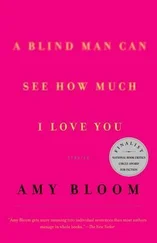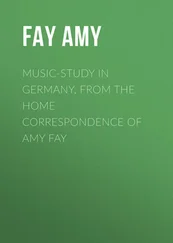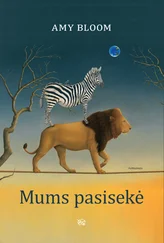Despite — or because of — the reassurance, Angela became increasingly puzzled and frightened. Why wouldn’t they still love her? Why wouldn’t she still be their “dear sweet little girl”? A week later, Angela was admitted to the endocrinology service at Children’s Memorial Hospital in Chicago. Her ovaries had not developed properly, the doctors said, and if they weren’t removed immediately, they would probably become cancerous: there was great urgency. Angela awoke from the surgery and “felt the packing, like a blanket of wet blood where my who-knew-what-it-was-called had been.”
Angela and her parents tried hard to forget the surgery. Angela tried hard to believe that her “growth,” as she had come to think of it, had been removed to protect her from cancer, and she clung to that belief until she was about twenty-four. She’d gone into therapy for an eating disorder — a problem that people understood, a problem her mother could worry about openly — and her therapist encouraged her to write for her medical records. She did, and after three weeks during which she feared that the records had been sealed or lost, or that the hospital simply would not release them, they came: twelve pages, of which all Angela could grasp at first was that her pelvic type was consistent with that of an adolescent male. After her gynecologist helped her to decipher the medical terminology, Angela concluded that she probably has PAIS. The records showed that the “ovaries” the doctors had excised were actually undescended testes, which do pose a significant risk of cancer if not removed. But while they were at it, the doctors extended their sense of urgency to her disturbingly long clitoris, and removed it too, for reasons having nothing to do with the potential for cancer. “I guess they assumed everyone was as horrified by my outsized clit as they were,” she says.
Angela went home to Peoria for Christmas and didn’t say a word. Months later, a friend sent her Cheryl Chase’s newsletter, and Angela regarded the word “hermaphrodite” in a new light. “It hadn’t ever been a special word to me. It all sounded nuts, and then I read it and then I saw: this was my experience.” She wrote to Cheryl Chase, who wrote back as she always did and always does; they corresponded and they met. Chase convinced her that together they could help intersexed children and prevent the surgical tragedies that most laypeople, and most doctors, considered not merely the lesser of two evils but a pretty good solution. Chase’s fervor offered the irresistible choice of health rather than illness, of action rather than regret, and in 1996 Angela Moreno Lippert became an activist for ISNA. She now works with physicians as executive assistant to the director of Surgery and Allied Services at the hospital where she was first diagnosed.
Hale Hawbecker is a regular, middle-of-the-road, white-bread guy with a kind face and a quiet wardrobe. He has a wife and kids and a job as an attorney with the Environmental Protection Agency, and as he says himself, if you’d told him a few years ago that he would find himself sitting in large rooms discussing his genitals with strangers, he’d have called you crazy. But now he sits on ISNA panels, helping the world understand that surgery is not always — not even most often — the best solution to all of the syndromes that tend to produce variant or ambiguous genitals.
“If not for the two essential Hawbecker characteristics, denial and procrastination,” he tells a large audience in one of his occasional public speaking engagements, “I would be sitting here a very, very, very angry lesbian. The doctors told my parents I had a very, very small penis. My parents said, ‘Do we have to do anything about it now?’ And when the doctors hesitated, my parents took me home and wouldn’t bring me back.” The doctors told the Hawbeckers that their son was deformed and, if not treated surgically, would probably kill himself from shame when he entered adulthood. “I didn’t,” he says. For a moment, he is visibly uncomfortable, and saddened both by what might have happened and by the actual difficulties of his physical condition. “You could look at my genitals and find them pathetic, or”—and he smiles—“you can look at them as my wife and I do and find them … adorable. But they are mine, they are intact, and I will be grateful for the rest of my life to my parents for their decision to let me be.”
The audience, some politically minded, some medically minded, and some just curious, exhales in relief. They are horrified by the idea that this perfectly nice, perfectly ordinary man might have been mutilated and forced to live as a girl because his penis was so small as to disturb his doctor.
Hale Hawbecker might never have spoken out if Cheryl Chase hadn’t persuaded him to tell his story for the sake of babies less lucky. All roads, all conversations, all the best writings on the intersexed (Dreger, Fausto-Sterling, Kessler), lead to Cheryl Chase, and so does almost everyone else who deals with the subject, in sexology of all kinds, in pediatric endocrinology, in the practical business of civil rights, and in the even more practical business of medical care. Mickey Diamond, the psychologist who helped topple John Money through dogged intellectual persistence, impeccable research, and his own unshakable conviction that he was right and Money was wrong, even when no one else was publicly on Diamond’s side, says of Chase, “Well, she has her own agenda, but everything ISNA suggests as the right way to treat these children is the right way. Nature loves variety. Unfortunately, society hates it.”
I meet Chase last, after the other folks from ISNA, after pediatricians and surgeons and endocrinologists and historians, after interviewing people who were suicidal from age eleven until the day they discovered ISNA, and people who never thought there was anything wrong with their unusual genitalia and still don’t, and people who believe they are a third gender. (“Well, what else am I? What else would you call it?” asked Eugene Pennington, an ISNA member engaged in a lawsuit against the company that fired him. “I have breasts and a penis and I definitely feel some kind of monthly cycle. I live as an effeminate straight man. I don’t feel like an unusual guy, I feel like something else entirely. What I really am is a third gender — which no one wants to hear about.”)
Chase and her partner, Robin Mathias, a health care data analyst and now also an ISNA volunteer, rent a gingerbread house in a middle-class neighborhood in Petaluma, California. A lush and entangled garden hides the door. Once through the gate and the front porch, I enter ISNA in its two-room entirety. Like any successful nonprofit, it is humming with computers and faxes and graduate student interns, but even the best endowed of nonprofits can’t touch ISNA’s computer wizardry. It’s not the budget or the size of its staff that makes ISNA huge; the truth shall set you free, and the Web shall get the truth out there. Virtual ISNA is huge and deep, an exquisitely organized website with links to everything intersex. Medical professionals, support groups, intersexed people, the parents of intersexed newborns, academics, the wannabe intersexed, and the intersexed-chasers all flock to the site. Those who think they are intersexed, or hope they are intersexed but have no physical sign of intersexuality (“I have terrible PMS. Am I intersexed?” “I can’t stand most men, even though I’m a man. Am I intersexed?”), are sent elsewhere, briskly. Those who desire romance with the intersexed are ignored.
ISNA now has money — not a lot, about a hundred thousand dollars, but a geometric leap from the change in Chase’s pocket when she started this movement. Doctors, especially pediatricians, send in their contributions, and Chase and her CFO both now receive modest salaries. Before she started ISNA, Chase founded a software development company. She was successful in America and Japan, and there is very little about computers and communication and the art of translation that she doesn’t understand. And when, despite all the success, she felt herself falling apart, she volunteered at Tokyo English Life Line (TELL), a crisis hotline for English-speaking people of all nationalities. Suddenly she recognized depression, recognized identity confusion, recognized people in denial, and she began to remember and to wonder. She remembered multiple X rays and blood tests and manual examinations of her vagina and rectum, at the age of seven, and the surgery to trim the testicular part of her ovotestes away. She remembered and she researched and she became a one-woman campaign, not to stop surgery (that would be an understandable goal, given her experience, but it is not her goal, because she is not only a thoughtful person but a logical one), but to stop the shame and prejudice that lead to unnecessary surgery.
Читать дальше












